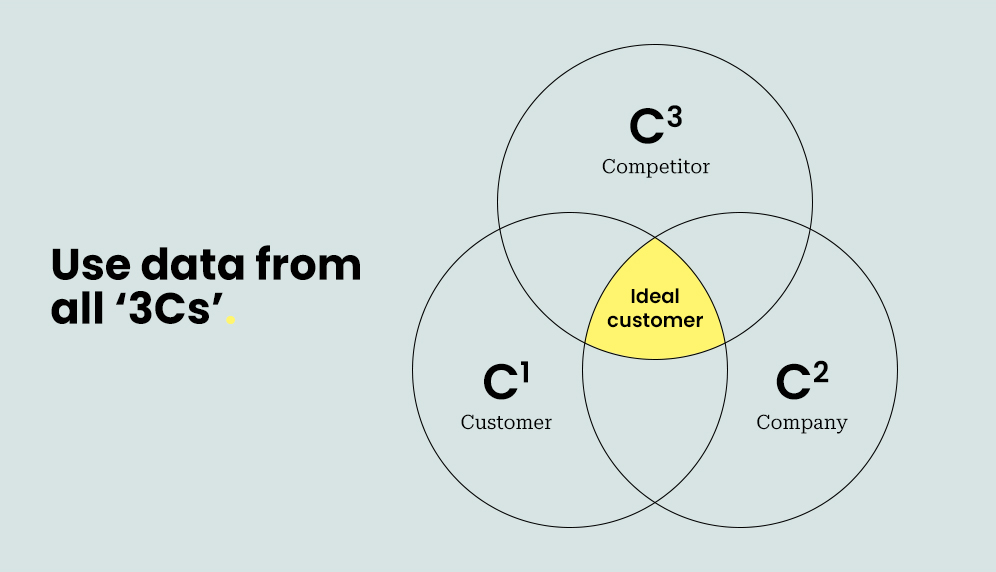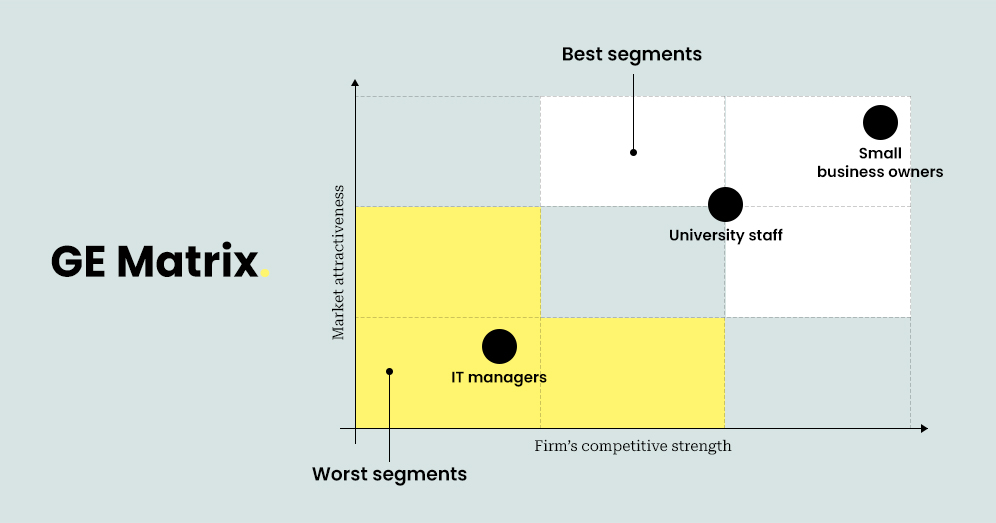
5 essential tips to clearly define your ideal target market
Why targeting is a strategy in its own right, and why you need it to achieve maximum ROI.
Segmentation, targeting, and positioning often go hand in hand. However, as key components of all marketing strategies, these practices are usually lumped together and treated as one process. Unfortunately, this can lead to unpromising results, such as stagnant growth, poor sales pipelines, high customer churn, and poor ROI.
This article explains why effective targeting is important – and shares what you can do to get a crystal-clear idea of your ideal customer segments.
Why is it important to have a clearly defined target market?
According to Robert W. Palmatier and Shrihari Sridhar’s book Marketing Strategy: Based on First Principles and Data Analytics, a fundamental challenge that all organizations must address is customer heterogeneity – or in other words, the fact that all customers differ.
This may seem obvious, but consider its effects on the industry.
The underlying assumption that customers have different preferences and needs (real or perceived) is why most companies do not promote their offerings to all customers.
It’s also why we marketers avoid broadcasting the same message to every customer segment; doing so signifies a generic approach, which wastes time and money.
To manage customer heterogeneity, it’s important to have a clearly defined target market. When you know who your most valuable customers and personas are, your positioning becomes exponentially more effective.
By focusing on your most valuable customers, you can allocate your resources more efficiently, targeting those most likely to convert and provide long-term value. You’ll also be able to identify the segments you should avoid focusing on, which can greatly improve your return on investment (ROI).
Understandably, this can be easier said than done – especially if your organization currently sees segmentation, targeting, and positioning as one process.
Alternatively, you may find that your company places greater importance on segmentation than on targeting (i.e. successfully dividing a market into small segments but not catering to any particular one – or not having an adequate rationale for why a certain segment should be prioritised over others).
If any of these scenarios apply to you, here are some tips.
5 tips to clearly define your ideal target market
Use data from all ‘3Cs’: customer, company, competitors
Before you begin to consider what market segment (or segments) make the most sense for your organization, it’s important to have all the data ready first.
In order to get a fuller and more accurate picture, it should come from a wide variety of sources. If you’re not sure of what kind of data you should collect or how it should be organized, the 3Cs framework can help.
According to organizational theorist Kenichi Ohmae, success heavily depends on three pillars: the customer, the company, and its competitors. Your organization needs to have enough data and information so you can analyse all three.

Overall, your company and customer data should be easy to collect. When it comes to the latter, numbers you might’ve calculated during the segmentation process will prove especially useful (like market sizes, growth rates, etc.). But other important sources may also include:
- Demographic censuses
- Google Analytics
- Social media analytics tools
- CRM platforms
- Previous customer surveys, interviews, focus groups
- Lead generation forms
- Sales feedback
By contrast, competitor data is most likely to be the least accessible. However, you can still deduce what kind of segments your competitors are targeting by analysing their offering, their online presence, their content strategy, etc. Are your competitors leaving gaps that your company can easily address?
Rank segments on market attractiveness and competitive strength
Once you have all the data ready and available, it’ll be easier to begin deciding which market segments your organization should serve.
A useful rule of thumb for companies is to rank segments on two measures: market attractiveness and your competitive strength.
Market attractiveness is all about the external characteristics of a segment – and whether they make the segment strategically and financially valuable to serve. This will depend on factors like market size, growth rates and price sensitivity. Large, fast-growing and price-insensitive segments are considered to be the most desirable because they tend to generate more revenue. The data you have gathered will help you determine whether a certain segment exhibits these characteristics.
Competitive strength, on the other hand, is about how well your organization can secure and maintain market share from a segment (relative to other competitors). If you’ve identified an extremely large segment but don’t have enough organizational resources to meet their needs better than other companies, then it’s not the best segment for your particular firm. Company data and competitor insights will help you determine whether this is the case.
Create a GE Matrix to help you visualise the most attractive market segments
Sometimes, you might find that there are multiple attractive segments you can target. A GE matrix will help you narrow things down and gain a clear visual understanding on who you should prioritize the most.

Let’s use a small software firm as an example. As you can see, the y-axis indicates market attractiveness and the x-axis represents the competitive strength of the company. The size of each bubble denotes the size of the market segment. Small business owners represent the best segment for this specific firm (followed closely by university staff), whereas IT managers from large corporations represent the worst.
Make sure your chosen segment(s) are ideal
For an attractive segment to actually be ideal for your company, they must also meet 3 other criteria.
Firstly, the segment must care about the company’s offering. For example, university students may form a large part of the productivity software market but if the purpose of your software is to manage employee workflows, then they couldn’t be your ideal segment.
Secondly, it should be unique. If there are major crossovers between your segment and other segments, this can cause confusion down the line – especially when it comes to brand positioning.
Lastly, it’s vital that your segment is sustainable and can be easily identified. If your target customers quickly grow out of their need for your offering and coudn’t easily be reached, then they’re less likely to be financially valuable in the long term.
If you have multiple offerings, make sure they’re aligned with your target segment(s)
Some companies have multiple offerings aimed at only one segment (undifferentiated marketing), but others have separate segments for each offering (differentiated marketing).
For the best results, it’s essential to select the right targeting strategy for your organization.
Having an undifferentiated strategy is more cost-effective in the long run. Less time and money is spent on content marketing and online advertising because you don’t need to create multiple campaigns or content streams tailored to each segment or persona. However, this will only work well if your offerings truly have mass appeal.
For most B2B companies, this won’t be the case. However, the advantage of a differentiated marketing strategy is that your unique approach to each segment is likely to generate more brand resonance and loyalty.
Having a clear idea of your targeting strategy is crucial if you have multiple offerings or products, as it will ensure that you don’t unintentionally mix up segments.
Final thoughts
Segmentation, targeting, and positioning are a part of the same process, but they are not the same.
To achieve effective product positioning (and benefit from stronger sales pipelines and improved ROI), having a clear targeting strategy is essential. For this to happen, you should base your decisions on data from a diverse range of sources. It’s also important to rank segments using objective criteria and ensure that your approach makes sense for your organization’s product portfolio.
This post has been updated on August 27th, 2024. Originally published: April 28th, 2022
Read the latest positioning trends and insights.
Tap into our brand and product positioning, storytelling, and creative expertise to inspire your next strategic move.


